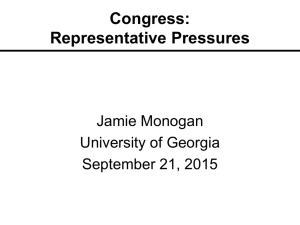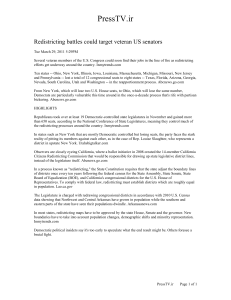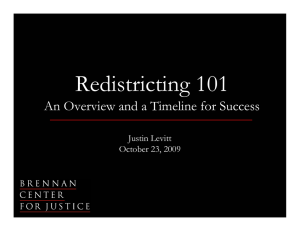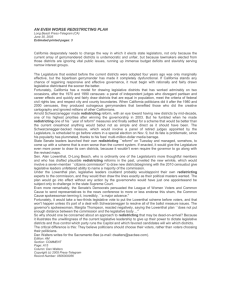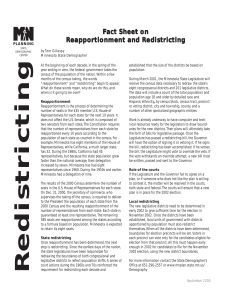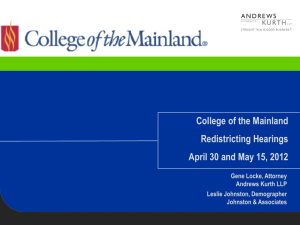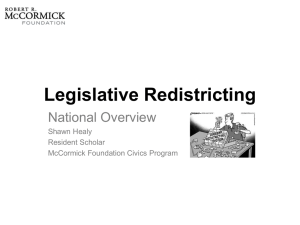Press Release - Statewide Database
advertisement
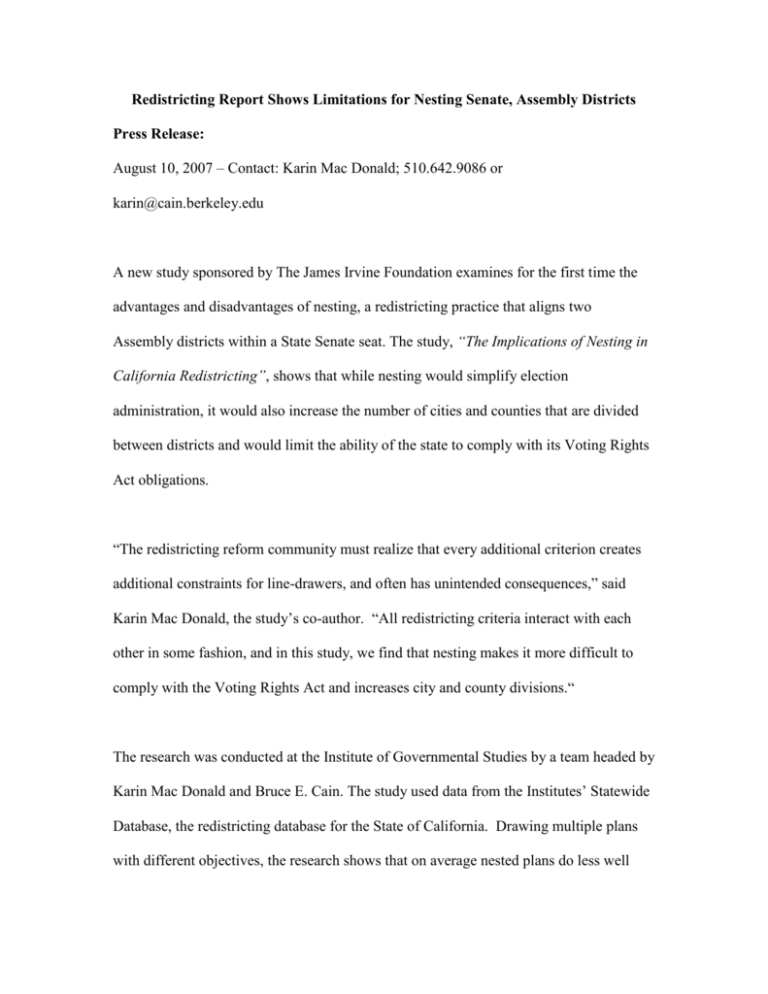
Redistricting Report Shows Limitations for Nesting Senate, Assembly Districts Press Release: August 10, 2007 – Contact: Karin Mac Donald; 510.642.9086 or karin@cain.berkeley.edu A new study sponsored by The James Irvine Foundation examines for the first time the advantages and disadvantages of nesting, a redistricting practice that aligns two Assembly districts within a State Senate seat. The study, “The Implications of Nesting in California Redistricting”, shows that while nesting would simplify election administration, it would also increase the number of cities and counties that are divided between districts and would limit the ability of the state to comply with its Voting Rights Act obligations. “The redistricting reform community must realize that every additional criterion creates additional constraints for line-drawers, and often has unintended consequences,” said Karin Mac Donald, the study’s co-author. “All redistricting criteria interact with each other in some fashion, and in this study, we find that nesting makes it more difficult to comply with the Voting Rights Act and increases city and county divisions.“ The research was conducted at the Institute of Governmental Studies by a team headed by Karin Mac Donald and Bruce E. Cain. The study used data from the Institutes’ Statewide Database, the redistricting database for the State of California. Drawing multiple plans with different objectives, the research shows that on average nested plans do less well than non-nested ones in terms of creating majority minority districts and keeping local jurisdictions wholly within district lines. The report also compares two types of nesting procedures: an aggregation method that combines two Assembly districts into one Senate seat, and a division method that divides a Senate seat into two Assembly districts. The division method seems to minimize the minority representation and city split problems associated with nesting somewhat, as compared to the aggregation method.
